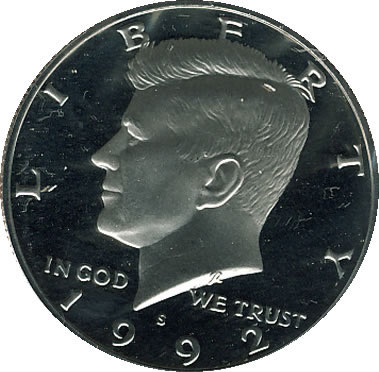Early Life
John Fitzgerald Kennedy was born in Brookline, Massachusetts, on May 29, 1917. He was one of nine children. His siblings were Joe, Rosemary, Kathleen, Eunice, Patricia, Robert, Jean, and Teddy. His mother was Rose Fitzgerald Kennedy and his father was Joseph Patrick Kennedy. The Kennedys were a wealthy, well-connected family, and John attended Choate, a prestigious private boarding school for adolescent boys in Connecticut. He was very popular and had many friends. He played tennis, basketball, football, and golf and also enjoyed reading. In 1936, John enrolled at Harvard University in Cambridge, Massachusetts.
Military Courage
John entered the Navy after graduating from Harvard in 1940. On August 2, 1943, John’s PT 109 patrol boat was hit by a Japanese destroyer, killing two of his men. John managed to save himself and several others in the wreckage. He was awarded the Navy & Marine Corps Medal for leadership and courage.
Political Career
Kennedy’s political career began soon after World War II. In 1946, he was elected to the Massachusetts 11th congressional district. The popular Kennedy served three terms in the House of Representatives and was elected to the US Senate in 1952. Soon after his election, he married twenty-four-year-old Jacqueline Bouvier, a writer for the Washington Times-Herald. They had two children, Caroline and John, Jr.
The Youngest President
In 1960, Kennedy decided to run for president and became the Democratic Party candidate. He chose Texas Senator Lyndon B. Johnson as a running mate to gain support in the southern states. In September and October of 1960, Kennedy and Republican nominee Richard M. Nixon engaged in the first-ever televised presidential candidate debates. On November 8, 1960, Kennedy defeated Nixon for the presidency by an estimated two-tenths of one percent of the vote in one of the closest races in American history. In 1961, at 43 years of age, John F. Kennedy was sworn in as the 35th president of the United States. In his inaugural address, he stressed the importance of citizenship and uttered the famous quote “Ask not what your country can do for you; ask what you can do for your country.”
Bay of Pigs Fiasco
As President of the United States, Kennedy faced many challenges. His presidency got off to a rough start in 1961 with the infamous failure of the Bay of Pigs invasion. In an attempt to overthrow the Communist regime of Cuban leader Fidel Castro, US military forces suffered an embarrassing defeat at the hands of the Russian-trained Cuban military. The event further deteriorated relations between the United States and Cuba and set the stage for future conflict.
Cuban Missile Crisis
In 1962, Kennedy faced what came to be known as the Cuban Missile Crisis. Russia was attempting to position nuclear warheads in Cuba only 90 miles off the coast of Florida. President Kennedy ordered a naval blockade of all ships bound for Cuba. It was a tense time as the world teetered on the verge of nuclear war. Fortunately, Russia withdrew the missiles and agreed to sign the Nuclear Test Ban Treaty.
Space Race and Desegregation
In addition, President Kennedy created Project Apollo, which paved the way for American space exploration. He also guided the nation through the difficult period of desegregation. In the early 1960s, President Kennedy challenged students to serve their country in the pursuit of peace by assisting developing countries. As a result, the Peace Corps was created.
Assassination
On November 22, 1963, in Dallas, TX, President John F. Kennedy was shot and killed by Lee Harvey Oswald while riding in a motorcade. It was one of the most shocking news events in the history of the United States. Millions of people mourned. Only two days later, on November 24, 1963, Jack Ruby shot Lee Harvey Oswald dead.
Legacy
John F. Kennedy will forever live on in the hearts of Americans. Since his death, he has been honored by numerous cities and organizations. The Kennedy Center for the Performing Arts in Washington, DC, and the Kennedy Space Center were named for him. He has also appeared on numerous postage stamps as well as the US half-dollar.
 |
| John F. Kennedy Half-Dollar |